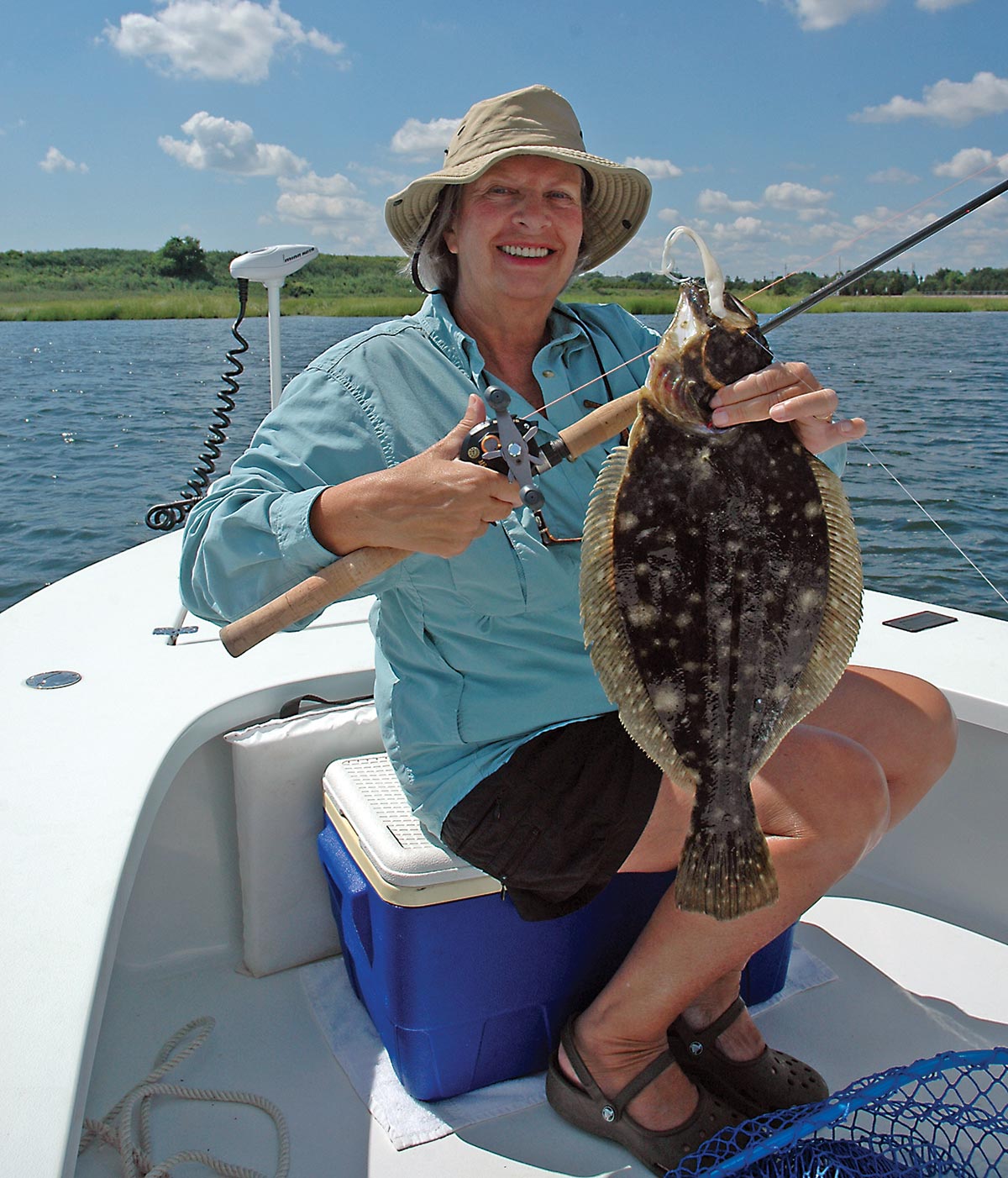Most anglers appreciate the aggressiveness of summer flounder, but not their fighting capabilities, and it’s a rare battle that lasts more than 5 seconds before the fish is flopping on the deck. Light tackle changes all that with a more fun, enhanced bait presentation and increased sensitivity to feel strikes.
A baitcasting set-up like the Shimano Curado 200 filled with 15-pound braid and mounted on a G. Loomis PGR821 Pro-Green is a good choice to balance out the need for sensitivity and lifting power to pull keeper fluke from deep channels. You can fish the reel in free spool to feed line when needed, and get tight with just a quick turn of the reel handle. If you prefer spin gear, the Tsunami Shield 3000 and Classic TSCS 701ML rod is a good choice. Lay the line across your index finger for maximum strike sensitivity.
Lighter tackle takes a bit longer to land a keeper-size fluke; maybe two minutes or so to land a fluke of a few pounds in the 24-inch range. Every fight feels stupendous with lots of give and take, and even throw-backs are fun to catch! More important, the rod softens the powerful lunges fluke make as they attempt a dash to the bottom, and violent head shakes at boatside are cushioned with lighter tackle.

Fifteen-pound braid feels like 4-pound mono so it slices through the water with virtually no resistance. You can use a much lighter sinker weight, which greatly enhances the ability to feel strikes, and when fishing with a bucktail or leadhead you can more easily maintain contact with the bottom. A half- or 1-ounce sinker will hold shallow bottom, even in strong currents. Ditto with leadheads. Use a leadhead with just enough weight to feel it thump bottom at each drop down of the rod tip. A 3/8- or 1/2-ounce leadhead, maybe 3/4-ounce at most, will be just right to maintain contact with the bottom in water of 5 to 15 feet deep.
Going light also applies to the rigs you use. Heavy leaders and hardware inhibit the action of the bait so it doesn’t look natural. A better rig can be made with 20-pound mono for the main leader, the smallest three-way swivel possible and light-wire hook. The 20-pound mono leader is supple and lets the bait move freely in the current flow. The added motion can be a big factor to convince more, and bigger, fluke to strike the bait. To be sure the hook rides on the same plane as the leader it’s a good idea to snell the hook to the leader. This guarantees the bait will always pull straight and true so it appears as natural as possible, and with no spinning.
When fishing with leadheads or bucktails, a 20-pound clear mono leader attached to the end of the gelspun line allows maximum jigging action. A non-slip loop knot will also add to the lure’s freedom of movement. Work the leadhead with short lifts of the rod tip so the lures, with its soft plastic tail, dances quite actively along the structure.
Bigger baits usually catch bigger fish, but with light tackle we have to keep the bait slim so it doesn’t have too much drag in the water. Fish belly is always a great choice; salmon belly flaps, fluke belly (know your state requirements), snapper belly or squid strips, but keep the profile as slim as possible so the bait will look big, and have maximum action without being too heavy.
Long, slender soft baits, like the Gulp pearl crazy legs jerk shad and any of the many 5- and 7-inch jerk baits are more appealing to big fluke than are the shorter 3- or 4-inch soft baits. If you want numbers of fish, the short baits are the way to go, but bigger fish for the dinner table are more likely to slurp down a longer bait.




